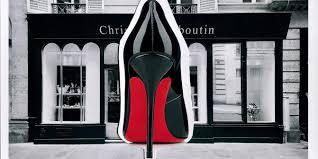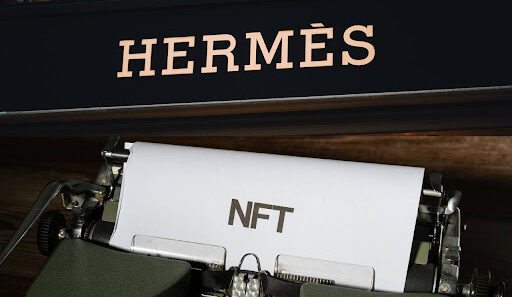Fashion is about the narrative a piece conveys, not just about the fabric or cuts. There is a weight to color in particular. Consider this: Hermès’ orange boxes conjure images of vintage leather goods, Tiffany’s blue, and the red soles of Louboutin shoes instantly shout high fashion splendor. That immediately suggests history, wealth, and jewellery. The tough question, though, is whether a business can truly claim a hue as its own. Although it seems straightforward, things get complicated in the courts. Judges must strike a balance between preserving a brand’s identity and allowing other designers to express their creativity (Scafidi 2005; Kawamura 2018).
One foundation for addressing this issue is provided by trademark law, which places a strong emphasis on safeguarding source-identifying symbols. The jurisprudence surrounding color markings, however, displays a conflict between protecting brand value and ensuring that innovation and competition are not hindered.
This article looks at how trademark law deals with the tricky question of owning a color in fashion. It starts by exploring the basic rules and legal ideas that support color protection and then moves on to the important court cases that have shaped how this works today. The discussion doesn’t stop there; it also dives into bigger debates about whether it’s even fair for one company to monopolize a color, comparing how different countries handle the issue. The essay concludes that trademark law is a two-edged sword that must allow for both creativity and common cultural expression while yet allowing brands to preserve their distinctive identities (Scafidi 2005; Kawamura 2018).

The Legal Framework of Color Trademarks
In most places, trademark law allows companies to register virtually anything: a word, a logo, or some other symbol that identifies the origin of a product. Colors, however, are a bit trickier. They usually only qualify if they’ve developed what lawyers call a “secondary meaning,” meaning customers come to associate that color specifically with one brand. The U.S. Lanham Act recognizes this idea, but courts have been careful: a color by itself isn’t automatically unique. Companies have to show that shoppers really do link that exact hue to their products and no one else’s (Scafidi 2005; Thomas 2019).
Another limitation comes from what lawyers call the “functionality doctrine.” If a color is deemed functional, meaning that letting one company claim it would seriously hurt competitors, it can’t be trademarked. Take outboard motors, for instance: if one manufacturer were allowed to claim exclusive rights to black, it would unfairly restrict the industry. Black isn’t just a style choice; it’s practical, making objects look smaller or easier to match with other parts (Scafidi 2005).
Case Studies in Fashion Color Ownership
Qualitex Co. v. Jacobson Products Co.
In Qualitex (1995), the U.S. Supreme Court made it clear that a single color can indeed be trademarked, as long as it has developed secondary meaning and isn’t functional. The case centered on a green-gold color used on dry-cleaning press pads; customers had come to connect that specific shade with the Qualitex brand. The Court explained that there was no solid reason to treat color any differently from other kinds of trademarks.
Christian Louboutin v. Yves Saint Laurent
The boundaries of color protection in fashion were put to the test in the Louboutin case. The business claimed that consumers immediately associated the hue with the brand and pushed to obtain exclusive rights to its iconic red soles. Only when the red sole contrasted with the rest of the shoe did the U.S. Second Circuit Court of Appeals rule in favor of Louboutin. If the shoe was entirely red, the trademark didn’t hold. This ruling shows how judges try to strike a careful balance: they want to protect a brand’s unique identity without letting a single company gain too much control over the market.

The Jurisprudential Debate: Can a Color Belong to One Entity?
Legal scholars have debated whether the ownership of color undermines the public domain of cultural symbols. On one hand, protecting distinctive colors prevents consumer confusion and rewards brand investment. On the other hand, overprotecting color risks “color depletion,” a phenomenon whereby too many monopolies in basic hues limit creative freedom in design.
The semiotic dimension complicates the analysis. In fashion, color does not merely identify source; it also conveys aesthetic, cultural, and emotional meaning. The law’s attempt to draw boundaries between source identification and aesthetic function reveals a jurisprudential struggle: is it appropriate for courts to grant private ownership of something so deeply embedded in collective culture?
International Perspectives and Divergence
The treatment of color marks varies across jurisdictions. In the European Union, color marks are permissible but subject to strict graphical representation requirements. Courts have emphasized precision in defining the shade, often requiring Pantone specifications. In Canada, distinctiveness is similarly required, but color marks face scepticism where they might be perceived as functional or overly broad. Asian jurisdictions, including Japan and China, have shown a growing willingness to recognize color marks, though enforcement remains inconsistent.
These divergences highlight the challenges of protecting color in a globalized fashion market. A shade protected in one jurisdiction may be freely used in another, complicating international branding strategies.

The Limits of Chromatic Protection
The legal system has articulated clear boundaries to prevent the overextension of color monopolies. The functionality doctrine ensures that useful or aesthetic colors remain accessible to competitors. Courts also police the requirement of distinctiveness to ensure that only colors with strong consumer association gain protection. Furthermore, alternative intellectual property regimes, such as design patents and copyright, provide more limited, time-bound protections for ornamental features, thereby avoiding permanent monopolization of cultural symbols.
The concept of “color depletion” remains an important policy concern. If too many shades are appropriated by individual brands, the pool of available colors for creative use could shrink. Courts have thus been careful to frame color protection narrowly, ensuring that the law does not lock away fundamental tools of design.
Conclusion
The jurisprudence of color ownership in fashion demonstrates both the adaptability and the caution of trademark law. Courts have recognized the economic and symbolic power of color, granting protection where shades have become iconic brand identifiers. At the same time, they have enforced limits to ensure that color remains part of the cultural commons, available for competition and creativity. Ultimately, trademark law walks a fine line: it allows fashion houses to leverage chromatic exclusivity while resisting the temptation to privatize the spectrum itself.


















